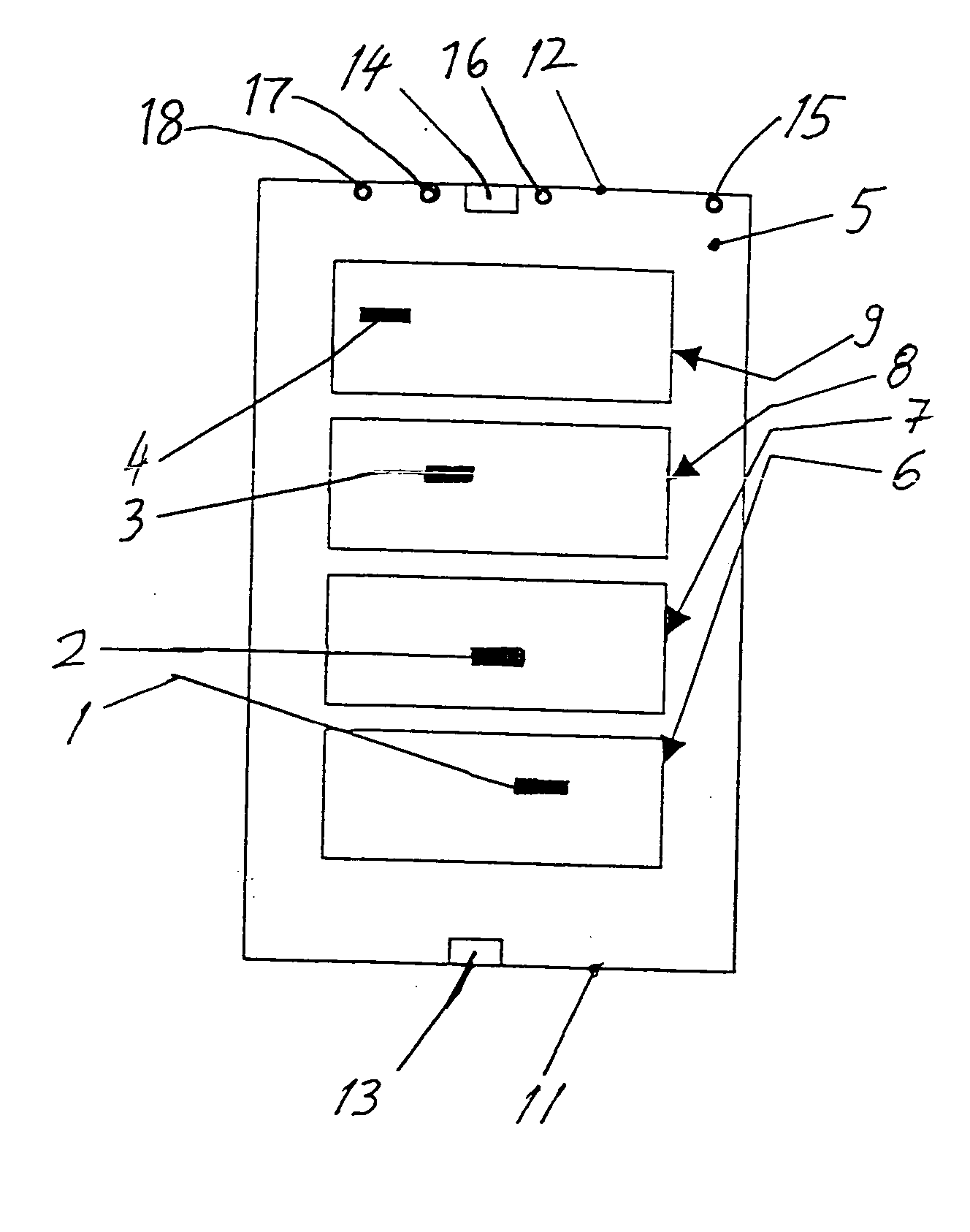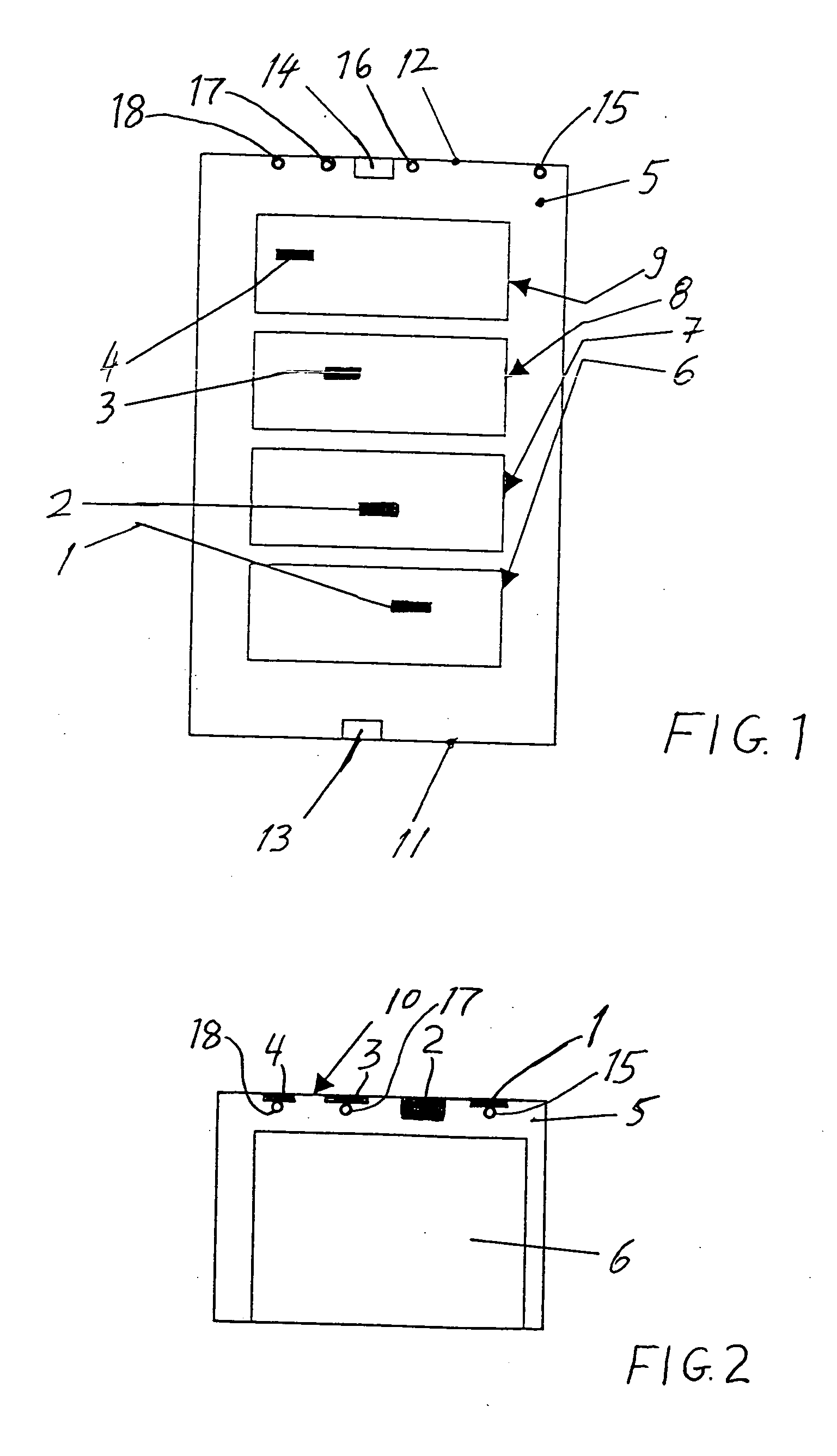Method and apparatus for optically detecting and locating a fire in an enclosed space
a fire and enclosed space technology, applied in the field of methods and apparatus for optically detecting and locating fires in enclosed spaces, can solve the problems of insufficient development of automatic interpretation algorithms for determining whether a fire is detected, system not yet in actual practical use, and insufficient reliability of optically monitored spa
- Summary
- Abstract
- Description
- Claims
- Application Information
AI Technical Summary
Benefits of technology
Problems solved by technology
Method used
Image
Examples
Embodiment Construction
[0018] FIG. 1 schematically represents a top view onto or into a freight compartment 5 of an aircraft representing an enclosed space that is to be optically monitored for fire detection according to the invention. Four cargo load units such as cargo or freight pallets or especially containers 6, 7, 8 and 9 are arranged at respective stowage positions within the freight compartment 5. A plurality of thermally reactive elements, particularly being intumescent material strips 1, 2, 3 and 4, are arranged in a predefined pattern on the ceiling 10 of the freight compartment 5. Namely, one of these intumescent material strips 1, 2, 3 and 4 is respectively arranged above each one of the containers 6, 7, 8 and 9 on the ceiling 10.
[0019] In addition to being spaced from one another respectively above the containers in the longitudinal direction of the aircraft, the intumescent material strips 1, 2, 3 and 4 are transversely or laterally offset from one another or staggered, as will be describe...
PUM
| Property | Measurement | Unit |
|---|---|---|
| trigger temperature | aaaaa | aaaaa |
| trigger temperature | aaaaa | aaaaa |
| temperatures | aaaaa | aaaaa |
Abstract
Description
Claims
Application Information
 Login to View More
Login to View More - R&D
- Intellectual Property
- Life Sciences
- Materials
- Tech Scout
- Unparalleled Data Quality
- Higher Quality Content
- 60% Fewer Hallucinations
Browse by: Latest US Patents, China's latest patents, Technical Efficacy Thesaurus, Application Domain, Technology Topic, Popular Technical Reports.
© 2025 PatSnap. All rights reserved.Legal|Privacy policy|Modern Slavery Act Transparency Statement|Sitemap|About US| Contact US: help@patsnap.com


